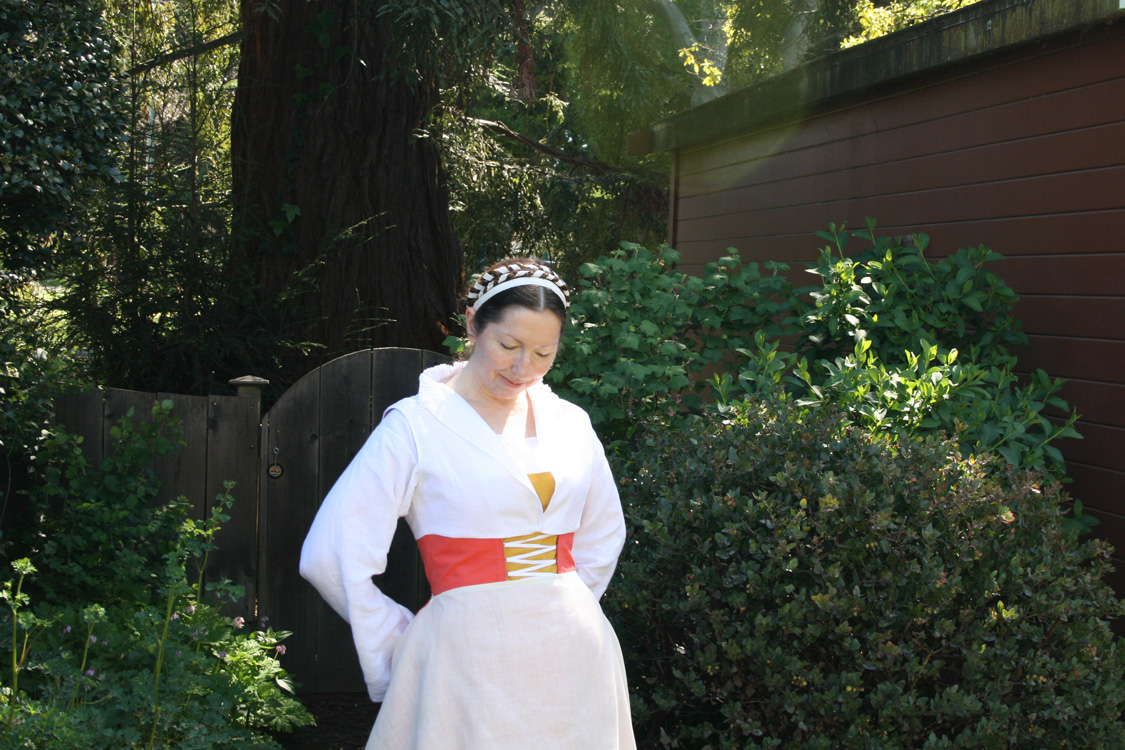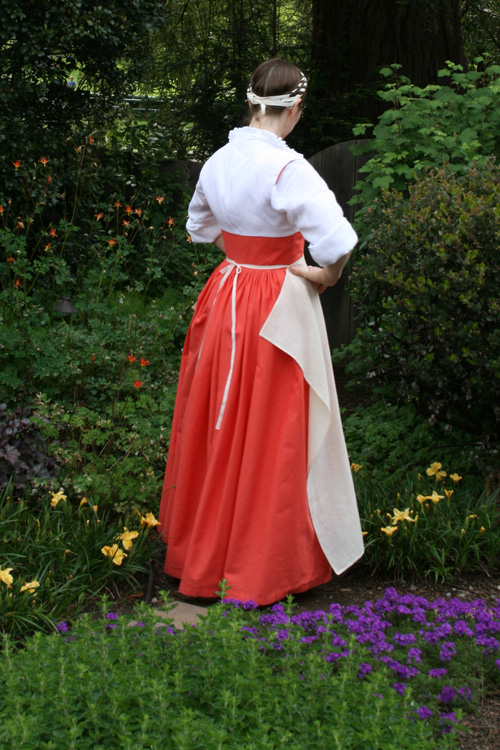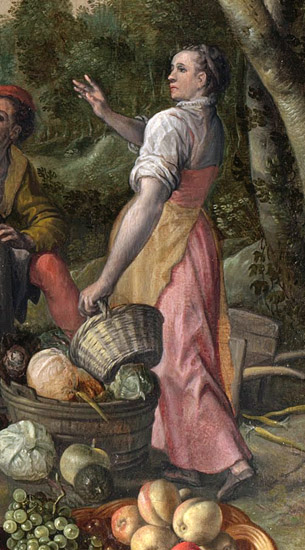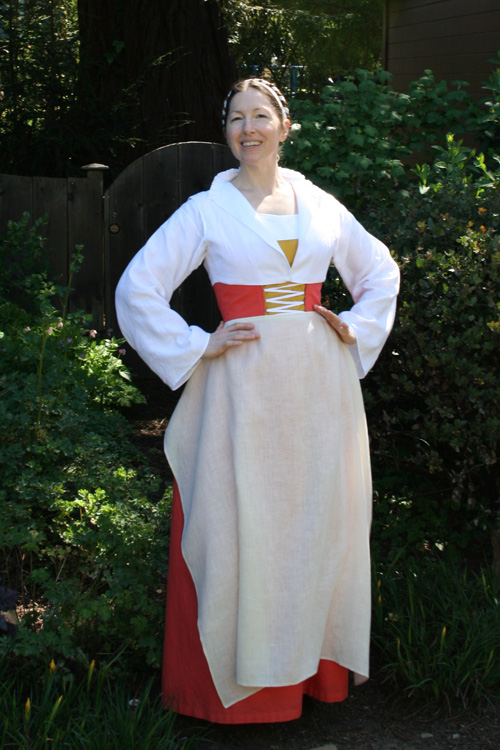
April – December 2016
If any historical outfit could be considered a “classic,” then surely the Flemish peasant dress is one. There are so many lovely recreations of these ensembles out there to emulate! This was quite possibly the oldest item on my “costumes to make” sewing list. My version is in linen and linen blends, and fashioned after the artwork of Joachim Beuckelaer and Pieter Aertsen. Below you will find a link to images of Flemish Dress 1560s-1570s, with details and clues to construction, as well as a sampling of Beuckelaer kirtles worn with and without sleeves.
It seems everyone takes a different approach to the construction of these dresses. And I spent some time mulling over my options, and of course Drea Leed’s research. For the bodice, given the huge center front lacing gap, I needed some sort of boned foundation. (The “no boning used in support layers” business is just not for me). Also, the fewer layers the better. But there were still many ways to proceed. Morgan Donner’s instructive and inspiring Antwerp research, and dress write-up, were key in organizing my thoughts. The simplest, most comfortable solution was a new set of stays. And then if I made the placard a separate piece, the accessories could be mixed and matched. So that’s what I did. My costume layers can be broken down in this way: underneath everything is a smock, strapless peasant stays and a petticoat. On top, an unboned kirtle which laces over a simple placard. The Flemish partlet and apron naturally make up the final layers.
Though I did search for pretty wool, I couldn’t find any. So all of the fashion fabrics for this project, happily, came from the stash. The dress was made from exactly 3 2/3 yards of 44″ wide salmon-colored, linen-cotton blend. The yardage had been cut into a couple of lengths. The fabric had been earmarked for the muslin box. But I realized that it was a great Flemish color and I could eek out the dress by cutting the skirt on the cross grain. I dug out some hanky linen for the aprons, and some scraps for the placards (red linen-cotton and mustard silk-linen). And ended up making two full sets of accessories. I even had a two yard length of hanky linen that had been dyed salmon. So I made a Tudor Tailor petticoat, pattern #19, to wear underneath. The light weight petticoat wouldn’t do anything for my silhouette, but it’s an exact color match, and I hadn’t lined the skirt, so I figured what the heck.
My full bodice patterns wouldn’t have fit the yardage. But since the front of the Flemish bodice is narrow I was able to cut it exactly as patterned. The bodice is underlined in broadcloth then bag-lined. I’d already tested the pattern on the Village Maiden dress, so was less nervous about the fit. But just to play it safe I kept my side seams exposed. The only boning is a single cable tie, set 3/8″ back from center front. Lacing rings are sewn directly to the lining, within that 3/8″ space. The bodice and cartridge-pleated skirt are finished separately and whip stitched together. I really love this method, for any era.
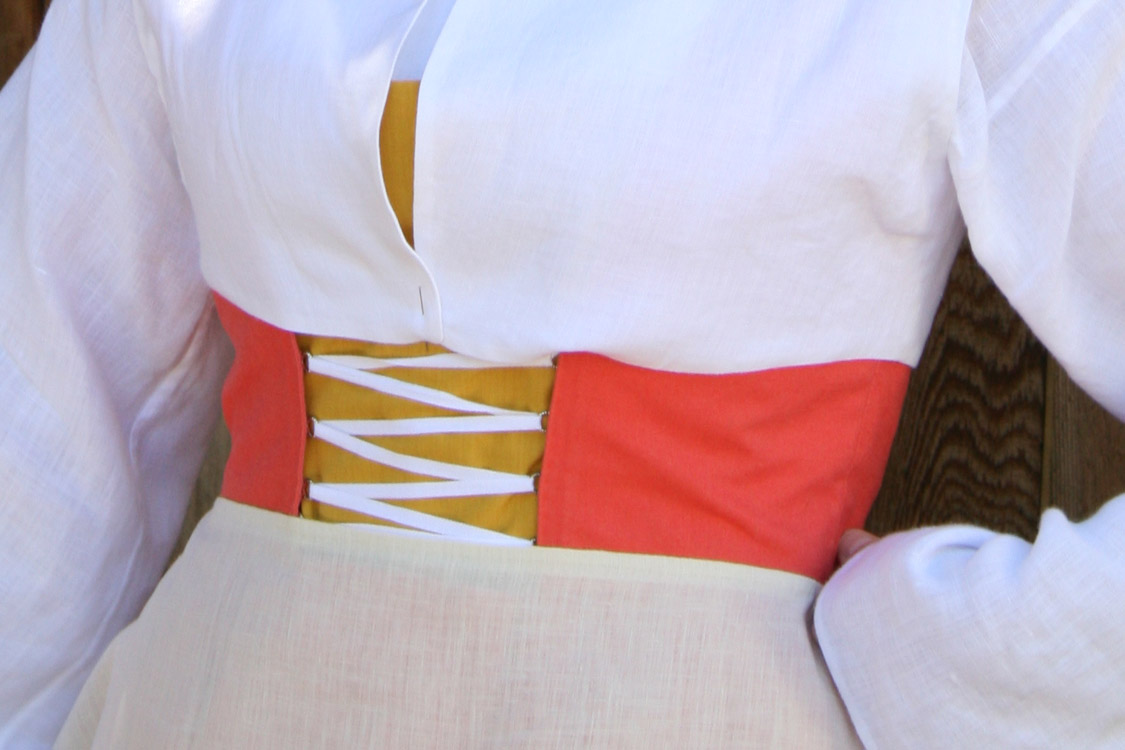

The skirt’s opening at center front has a couple inches of overlap and closes with a single pin. As mentioned above, the skirt is cut on the cross. It has a finished hem of 106″. It’s ever so slightly gored, so the waist is even narrower. My placard is shaped like an 18th C stomacher, lined in broadcloth and unboned. A single pin on either side of the bodice (at bust level) holds it in place. This keeps it from gapping or creeping out. Though if it did gap, that would be perfectly period too! This is actually a four-pin ensemble: the partlet closes with a single pin too. The aprons tie with tapes, and are handsewn with narrow hems. About 7″ of apron hangs free on either side of the waist.
Thank goodness for easy hairstyles. I followed The Tudor Tailor‘s method for dressing the hair, page 142. My hair is long enough that I hardly needed any hair pins. Instead of incorporating the tapes into my braids, I wrapped them around the finished braids in a spiral pattern.


